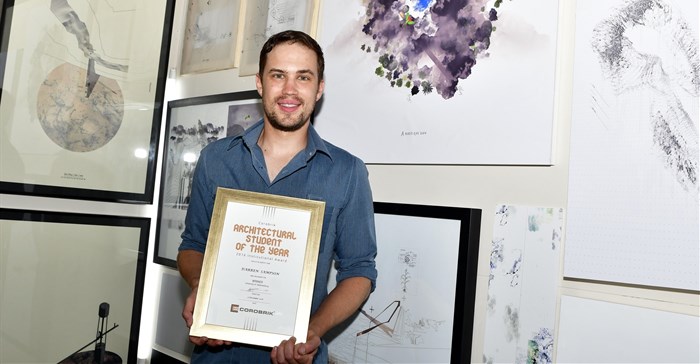UJ student takes top regional award in architecture competition

Innovation in sync with context provides the delight factor permitting architectural design to compete comfortably on the world stage. Technical skill, the ability to create memorable form that draws one in while treading softly on our planet is what puts the finishing touches to sustainable architecture. South African architecture continues to take positive strides also demonstrating an extra creative dimension unique in a country where the shaping of the urban landscape requires an appreciation of the complexities of creating an inclusive built environment, he said.
The competition involves the country’s eight major universities where the best architectural students are identified based on their final theses and presented with awards at regional events. The winners of each of the regional competitions then go on to compete for the national title at the 30th Corobrik Student Architect of the Year Awards in Johannesburg in May 2017.
UJ winners
Dave Ledbitter, Corobrik’s sales manager presented prizes to the winners from University of Johannesburg. Darren Sampson won first prize of R8,500, second prize of R6,500 went to Matthew Robson and third prize of R4,500 was presented to Mxolisi Makhubo. An additional prize of R4,500 for the best use of clay masonry was awarded to Ruairidh Macleod.
Ledbitter said that all the winners had shown a close affinity with their subjects and that their designs both enhanced and integrated with the communities in which they were sited.
Appreciation of clay brick
Speaking about trends in the profession, Ledbitter said that Corobrik had noticed a resurgence both internationally and locally in the appreciation of clay brick as a material with important flexibility in design and yet with intrinsic sustainable qualities so appropriate for advancing the affordability of government building projects.
“Life time aesthetics, durability and thermal efficiency are just three of the attributes of clay masonry which ensure low lifecycle costs and satisfy sustainability needs, in addition to allowing flexibility for innovative and aesthetically appealing design. These are important attributes which enable architects to create memorable and relevant additions to the built environment in South Africa using clay brick,” said Ledbitter.








